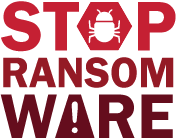Ransomware FAQs
What is ransomware and how do malicious cyber actors use ransomware to attack their victims?
Ransomware is an ever-evolving form of malware designed to encrypt files on a device, rendering any files and the systems that rely on them unusable. Malicious actors then demand ransom in exchange for decryption. Ransomware actors often target and threaten to sell or leak exfiltrated data or authentication information if the ransom is not paid. In recent years, ransomware incidents have become increasingly prevalent among the Nation’s state, local, tribal, and territorial (SLTT) government entities and critical infrastructure organizations. Ransomware can also hit service providers, so the risk is not only associated with an organizations on-premises or internally managed IT systems.
Malicious actors continue to adjust their ransomware tactics over time, to include pressuring victims for payment by threatening to release stolen data if they refuse to pay, and publicly naming and shaming victims as secondary forms of extortion. Malicious actors engage in lateral movement to target critical data and propagate ransomware across entire networks. These actors also increasingly use tactics, such as deleting system backups, that make restoration and recovery more difficult or infeasible for impacted organizations.
Who is at risk of a ransomware attack?
Anyone with a computer connected to the internet is at risk, including government or law enforcement agencies and healthcare systems or other critical infrastructure entities.
What are the impacts of ransomware?
Ransomware can be devastating to an individual or an organization. Some victims pay to recover their files, but there is no guarantee that they will recover their files if they do. Recovery can be a difficult process that may require the services of a reputable data recovery specialist.
Ransomware incidents can severely impact business processes and leave organizations without the data they need to operate and deliver mission-critical services. The monetary value of ransom demands has increased, with some demands exceeding $1 million. Ransomware incidents have become more destructive and impactful in nature and scope. The economic and reputational impacts of ransomware incidents, throughout the initial disruption and, at times, extended recovery, have also proven challenging for organizations large and small.
Who are malicious ransomware actors?
The majority of the malicious actors conducting ransomware attacks are cybercriminals trying to cause harm to critical infrastructure or trying to enrich themselves.
What are some mitigations against ransomware?
CISA recommends the following precautions to protect users against the threat of ransomware:
- Update software and operating systems with the latest patches. Outdated applications and operating systems are the target of most attacks.
- Never click on links or open attachments in unsolicited emails.
- Back up data on a regular basis. Keep it on a separate device and store it offline.
- Follow safe practices when using devices that connect to the Internet. Read Good Security Habits for additional details.
What are other best practices against ransomware?
In addition, the U.S. Government also recommends that organizations employ the following best practices:
- Restrict users’ permissions to install and run software applications, and apply the principle of “least privilege” to all systems and services. Restricting these privileges may prevent malware from running or limit its capability to spread through a network.
- Use application allow listing to allow only approved programs to run on a network.
- Enable strong spam filters to prevent phishing emails from reaching the end users and authenticate inbound email to prevent email spoofing.
- Scan all incoming and outgoing emails to detect threats and filter executable files from reaching end users.
- Configure firewalls to block access to known malicious IP addresses.


